
Roots
Hair, in its most elemental form, is a living record, a silent witness to the ebb and flow of human experience. It holds within its very structure stories of lineage, climate, and the profound shifts in societal understanding. For textured hair, particularly that of Black and mixed-race individuals, this living record is especially poignant, often bearing the imprints of cultural pressures that have long shaped its appearance and care.
The journey toward hair straightening, while seemingly a simple styling choice, is deeply intertwined with a complex history of imposed beauty ideals and the resilience of identity. Understanding this journey requires a look beneath the surface, to the biological foundations of hair and the historical currents that have influenced its perception.

Hair Anatomy and Physiology Specific to Textured Hair
The unique qualities of textured hair begin at the follicular level, a realm of microscopic marvel. Unlike straight strands, which emerge from largely round follicles, highly coiled hair typically grows from follicles with an elliptical or oval shape. This distinct follicular geometry plays a significant role in the hair shaft’s spiral path as it emerges from the scalp.
The shape of the follicle dictates the degree of curl, with flatter, more ribbon-like follicles yielding tighter coils, while rounder follicles produce straighter hair. This inherent curvature of the hair shaft is not merely a visual characteristic; it influences everything from how light reflects off the strand to its susceptibility to breakage.
Within the hair shaft itself, the distribution of keratin, the primary protein component of hair, also differs in textured hair. The cellular arrangement within the cortex, the middle layer of the hair, contributes to the hair’s coiled shape and its elasticity. These variations in keratin distribution and cellular structure mean that textured hair often possesses fewer cuticle layers, the protective outer scales of the hair shaft, and these layers may not lie as flat as on straight hair.
This can lead to increased porosity, making the hair more prone to moisture loss and environmental damage. The natural bends and turns of coiled strands also create points of vulnerability where the hair can easily snag or break, particularly when subjected to mechanical stress or harsh chemical treatments.

Textured Hair Classification Systems
For many years, the beauty industry struggled with a standardized way to describe the vast spectrum of textured hair. This led to a lack of targeted products and understanding. However, systems have been developed to categorize hair based on its curl pattern, offering a more precise language for care. While these systems are helpful guides, they do not fully capture the individual variation within each hair type.
- Type 3 Hair ❉ This category generally encompasses curly hair, ranging from loose, buoyant curls that form a definite S-shape (3A) to springy, tight curls with more volume (3B) and corkscrew curls that are tightly packed (3C).
- Type 4 Hair ❉ This classification represents coily hair, characterized by very tight, often Z-patterned coils that are typically fine and delicate (4A), denser, more tightly packed coils with less visible curl definition (4B), and incredibly tight, sometimes invisible coils that appear as a zig-zag pattern (4C).
These classifications, while useful, serve as a starting point. Within each type, variations in density, porosity, and strand thickness create a unique hair profile for every individual. Understanding these inherent qualities provides a foundation for appreciating why certain cultural practices around hair have developed and why the health implications of altering hair texture carry such weight.
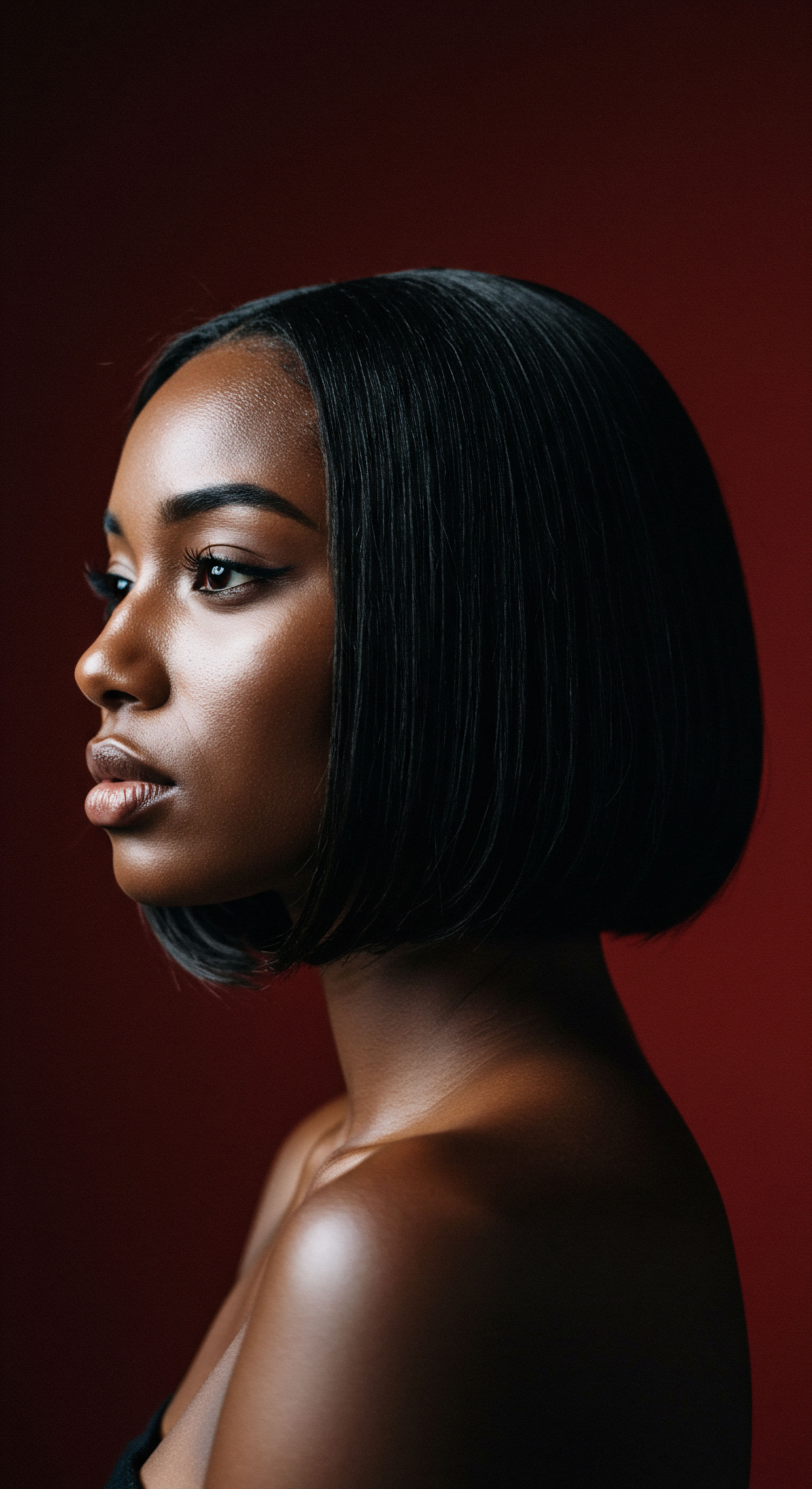
The Essential Lexicon of Textured Hair
A shared language helps us understand and appreciate the diverse world of textured hair. Words shape our perceptions and guide our care practices.
- Coil ❉ A tight, spring-like curl pattern, often seen in Type 4 hair, where the hair forms small, highly defined spirals.
- Kink ❉ A sharp, often zig-zag bend in the hair strand, characteristic of very tightly coiled hair, contributing to its volume and shrinkage.
- Shrinkage ❉ The phenomenon where textured hair appears significantly shorter when dry than its actual length when wet or stretched, due to its coiled structure.
These terms, once used disparagingly, are now reclaimed as descriptions of inherent beauty and strength. The language we choose to describe hair reflects our respect for its natural state.
The physical attributes of textured hair, from its elliptical follicles to its unique coil patterns, inform its care and susceptibility to external influences.

Hair Growth Cycles and Influencing Factors
Hair, regardless of its texture, follows a cyclical pattern of growth, rest, and shedding. This cycle, comprising the anagen (growth), catagen (transition), and telogen (resting) phases, is a continuous process. For textured hair, factors such as tension from styling, chemical applications, and heat can disrupt this delicate balance. Traction alopecia, a condition of hair loss caused by repetitive pulling or tension on the hair follicles, is a concern particularly relevant to tight hairstyles and certain straightening methods.
Moreover, systemic factors like nutrition, stress, and hormonal shifts also play a role in hair health and its ability to withstand external stressors. A holistic understanding of these elements provides insight into why certain hair practices, especially those involving chemical or extreme thermal alteration, can lead to long-term health consequences for the scalp and hair fiber.

Ritual
The pursuit of straight hair, a practice with deep historical roots, often involves a series of deliberate actions, a ritualistic engagement with one’s appearance. These rituals, whether daily or periodic, have been shaped by cultural expectations and the evolving tools available for hair alteration. Stepping into this space of practical knowledge means acknowledging the choices made, the techniques applied, and the motivations that have driven countless individuals to reshape their natural hair. This exploration seeks to provide guidance, a gentle hand leading through the historical landscape of straightening practices and their contemporary forms, always with an eye toward understanding the impact on the hair itself.

Protective Styling Encyclopedia
While straightening aims to alter the hair’s natural texture, many traditional practices within textured hair care communities focus on protecting the hair, reducing manipulation, and promoting length retention. These protective styles often serve as a respite from daily styling and can be crucial for maintaining hair health.
- Braids ❉ Formed by intertwining three or more strands of hair, braids come in countless variations, from simple three-strand plaits to intricate cornrows that lie flat against the scalp. Historically, braids have carried cultural significance, conveying status, age, and tribal affiliation.
- Twists ❉ Created by wrapping two strands of hair around each other, twists offer a versatile protective option. They can range from small, delicate two-strand twists to larger, chunkier rope twists.
- Bantu Knots ❉ A style where sections of hair are twisted and coiled tightly upon themselves to form small, knot-like buns, often left in overnight to create curl definition when unraveled.
These styles, passed down through generations, speak to a deep understanding of textured hair’s needs for moisture and reduced friction. They stand in contrast to practices that chemically or thermally alter the hair’s fundamental structure.
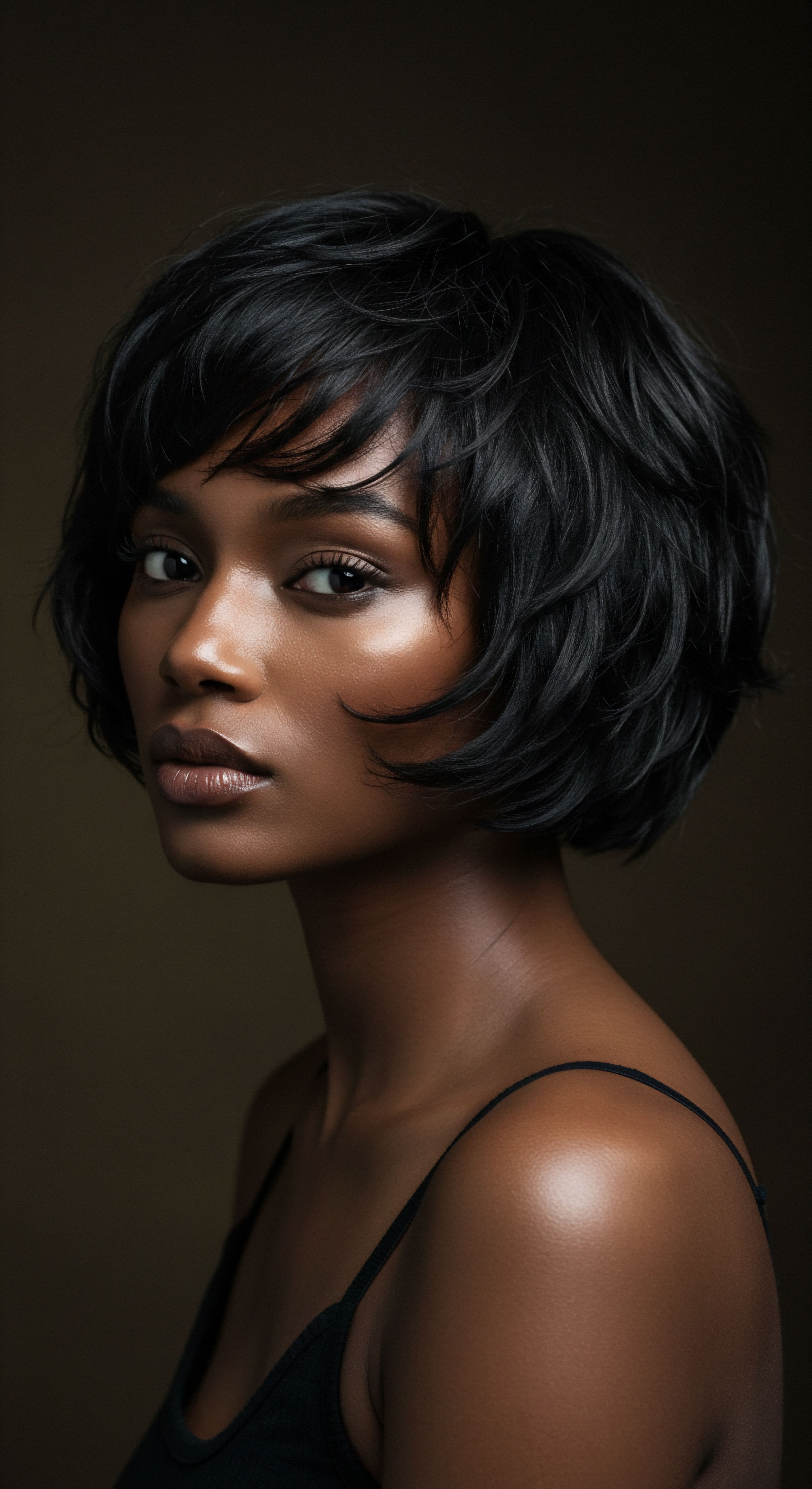
Natural Styling and Definition Techniques
Beyond protective styles, a variety of techniques exist to enhance and define natural curl patterns without relying on heat or chemicals. These methods celebrate the hair’s inherent beauty.
A common technique is the Wash and Go, where hair is cleansed, conditioned, and then styled with curl-defining products and allowed to air dry or diffused gently. This approach allows the hair’s natural coils to take center stage. Other methods include the Finger Coil, where individual strands or small sections are manually coiled around a finger to create uniform spirals, and the Rod Set, which uses flexi-rods or perm rods to set wet hair into defined curls or waves. These techniques prioritize the hair’s natural state, focusing on hydration and gentle manipulation to bring out its best.
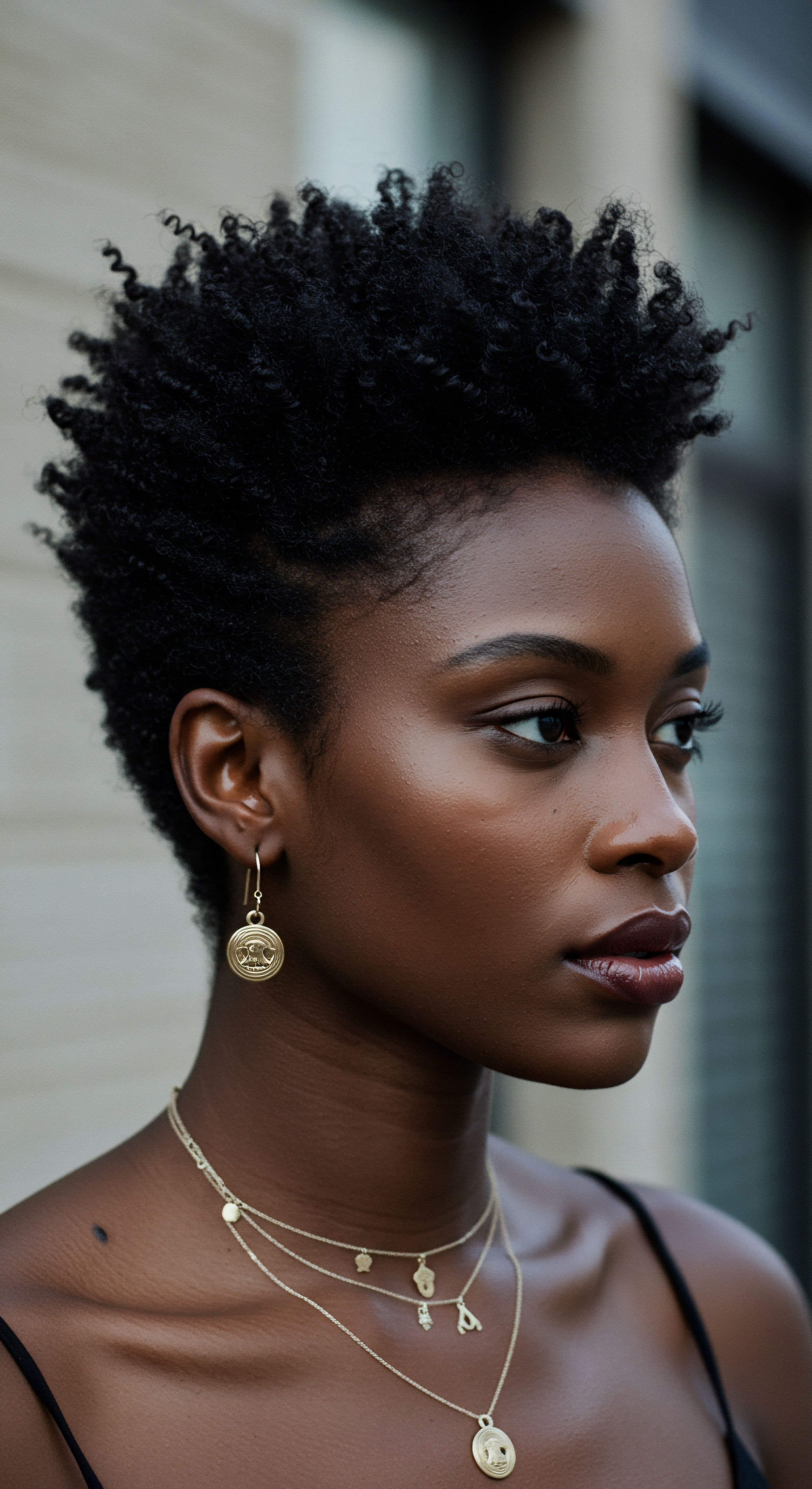
Wigs and Hair Extensions Mastery
Wigs and hair extensions have long been tools for aesthetic expression and, at times, for concealing damage or conforming to beauty standards. Their use has evolved significantly, offering versatility and protective benefits when applied correctly.
Wigs, whether full or partial, allow for complete transformations without direct manipulation of one’s own hair. Extensions, on the other hand, add length, volume, or color through various attachment methods like sew-ins, clip-ins, or tape-ins. While these options offer creative freedom, their application and removal demand careful attention to prevent tension on the scalp and hair follicles, which could otherwise lead to mechanical damage or hair loss. When used as a means to avoid heat or chemical straightening, wigs and extensions can serve a protective role, allowing natural hair to rest and recover underneath.
The spectrum of hair care rituals, from protective styles to temporary alterations, reflects a continuous interplay between personal expression and prevailing beauty norms.

Heat Styling and Thermal Reconditioning
The allure of straight hair has led to the widespread use of thermal tools. From the earliest hot combs to modern flat irons, heat has been a primary agent in temporarily altering hair texture.
The Hot Comb, popularized in the late 19th and early 20th centuries, involved heating a metal comb and passing it through hair to smooth and straighten it. This method, while effective for temporary straightening, carried risks of burns to the scalp and heat damage to the hair. The modern Flat Iron, a more refined tool, uses heated plates to press hair straight. While offering greater control, frequent use of high heat without adequate protection can lead to significant damage, including cuticle lifting, protein denaturation, and loss of moisture, resulting in brittle, dry strands and split ends.
Thermal Reconditioning, also known as Japanese hair straightening, is a more permanent heat-based method that chemically alters the hair’s disulfide bonds before flat ironing. This process fundamentally changes the hair’s structure, offering long-lasting straightness. However, it requires a high degree of technical skill and can cause severe damage if not performed correctly, leading to irreversible structural changes and potential breakage.

The Complete Textured Hair Toolkit
Effective care for textured hair relies on specific tools designed to work with its unique characteristics.
| Tool Category Wide-Tooth Comb |
| Description Combs with generously spaced teeth. |
| Purpose Detangling wet or damp hair gently, minimizing breakage. |
| Tool Category Denman Brush |
| Description A brush with rows of nylon pins set in a rubber base. |
| Purpose Defining curl patterns and smoothing strands. |
| Tool Category Microfiber Towel |
| Description Soft, highly absorbent towel material. |
| Purpose Reducing frizz and speeding up drying time without excessive friction. |
| Tool Category Satin/Silk Scarf or Bonnet |
| Description Smooth fabric head coverings. |
| Purpose Protecting hair at night, reducing friction and moisture loss. |
Using the correct tools is as important as the products chosen, as they directly impact the hair’s physical integrity during styling and maintenance. The choice of tools, much like the styling techniques, reflects a deeper understanding of hair’s needs.
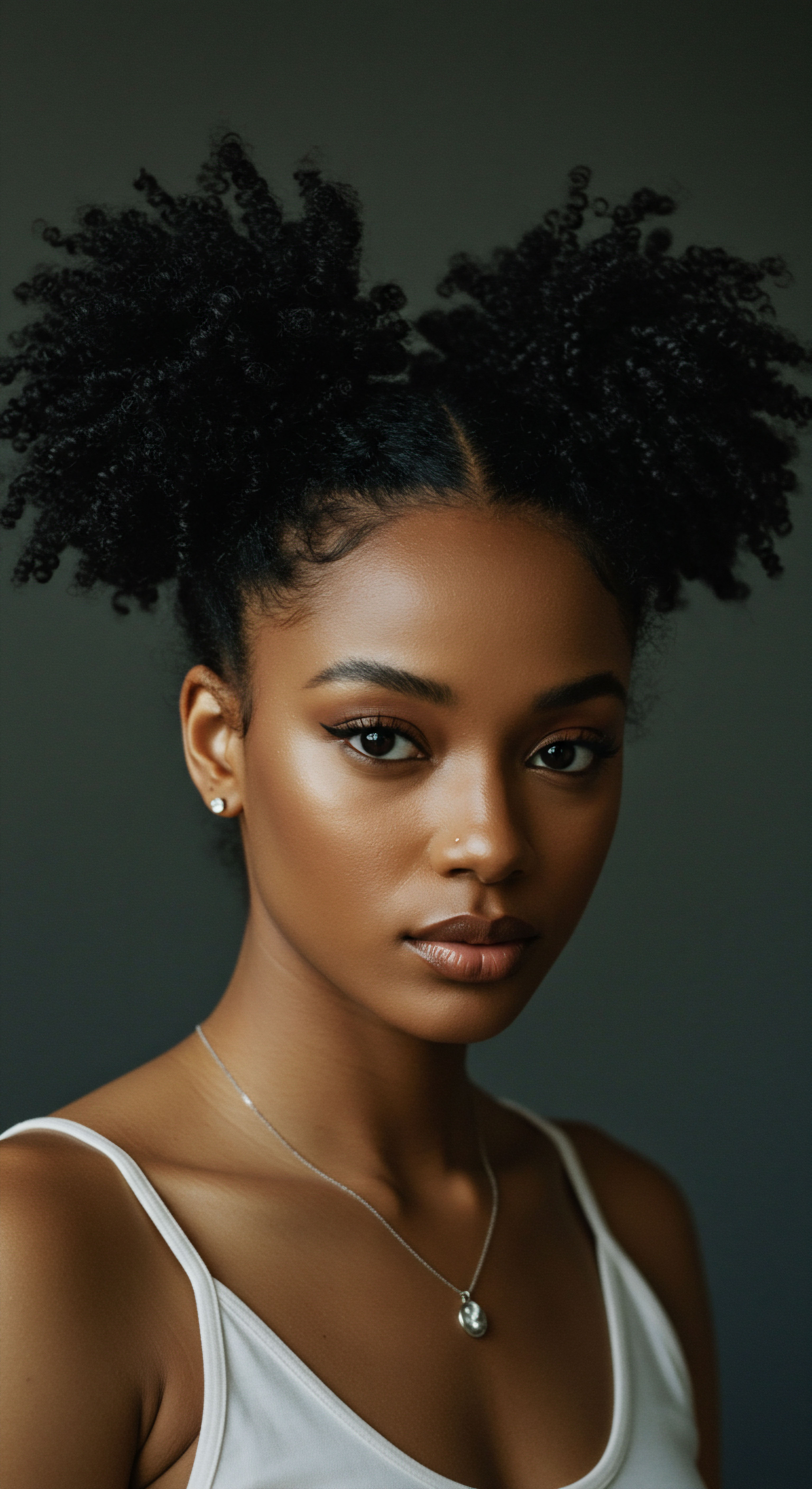
Relay
The story of hair straightening, particularly for textured hair, is far more than a simple cosmetic trend; it is a profound societal commentary, a complex interplay of power, perception, and personal choice. To understand its true scope, we must look beyond the superficial, examining the deep currents of cultural expectation, historical oppression, and the very real health implications that have accompanied this widespread practice. This section invites a deeper contemplation, a journey into the societal forces that have shaped hair practices and the scientific insights revealing their physical toll.

How Did Eurocentric Beauty Standards Become Dominant?
The historical trajectory of hair straightening is inextricably linked to the pervasive influence of Eurocentric beauty standards. During the transatlantic slave trade, a deliberate and dehumanizing act involved shaving the heads of enslaved Africans, severing their connection to ancestral traditions where hair held profound cultural, spiritual, and social significance. This act, along with the subsequent imposition of European ideals, established a hierarchy where straighter hair was deemed more “civilized,” “professional,” and “desirable.” This ideology permeated society, leading to a psychological burden for Black individuals who often internalized these negative perceptions of their natural hair.
The pressure to conform was not merely aesthetic; it was often a matter of survival, impacting social acceptance, educational opportunities, and economic mobility. For instance, in the post-slavery era, securing employment or navigating Jim Crow laws often meant presenting an appearance that minimized African features, including straightened hair.
This historical context underscores that hair straightening was not always a free choice. It became a mechanism for navigating a prejudiced society, a means to avoid discrimination in workplaces and schools where natural hair was frequently labeled as “unkempt” or “unprofessional.” This societal conditioning created a powerful incentive to chemically or thermally alter hair, despite the known risks. The persistent nature of these biases is evidenced by the continued need for legislation like the CROWN Act, which seeks to prohibit discrimination based on hair texture and protective styles in various states.

What are the Health Risks of Chemical Hair Straighteners?
The quest for straight hair, particularly through chemical means, has brought forth a concerning array of health implications, a stark reminder that beauty often comes at a cost. Chemical relaxers, designed to permanently alter the hair’s protein bonds, contain potent substances that can cause significant damage to both the hair and scalp. These products frequently contain chemicals such as sodium hydroxide (lye), calcium hydroxide, guanidine, parabens, phthalates, and formaldehyde-releasing agents.
The immediate consequences of chemical relaxer application can include scalp burns, irritation, and hair breakage. Beyond these acute effects, a growing body of research points to more systemic and severe health risks associated with long-term and frequent use, particularly among Black women who have historically been the primary consumers of these products.
The scientific literature increasingly links chemical hair straighteners to heightened risks of hormone-sensitive cancers.
A significant study published in 2023 by researchers at Boston University’s Black Women’s Health Study (BWHS) found that long-term use of chemical hair relaxers by postmenopausal Black women was associated with an increased risk of uterine cancer. Specifically, women who reported using hair relaxers more than twice a year or for more than five years had a greater than 50% increased risk of uterine cancer compared to those who never or rarely used them. This finding is particularly salient given that Black women already face higher rates of aggressive subtypes of uterine cancer and are nearly twice as likely to die from their disease compared to non-Hispanic white women.
This is not an isolated finding. Other studies have also identified connections between chemical hair straighteners and other hormone-related cancers, including breast and ovarian cancer. The presence of endocrine-disrupting chemicals (EDCs) like parabens and phthalates in relaxers is a key concern. These chemicals can mimic or interfere with the body’s hormones, potentially altering estrogen-dependent pathways and contributing to the development of tumors.
Furthermore, research suggests that chemical relaxer use, especially at a young age and with high frequency, may be associated with decreased fertility. The absorption of these chemicals through the scalp into the bloodstream is hypothesized to be a pathway for these systemic effects.

How Does Thermal Straightening Affect Hair Health?
While chemical relaxers pose systemic health concerns, thermal straightening, through the use of hot combs or flat irons, carries its own set of risks for hair integrity. The application of high heat can cause irreversible damage to the hair shaft.
One of the primary concerns is the denaturation of keratin, the protein that gives hair its strength and structure. Excessive heat can alter the protein’s shape, leading to a loss of elasticity and increased susceptibility to breakage. The hair’s cuticle, its outermost protective layer, can also be lifted and damaged by high temperatures, leaving the inner cortex exposed and vulnerable to moisture loss. This results in dry, brittle hair that is prone to split ends and dullness.
Over time, repeated thermal manipulation can lead to what is known as “heat damage,” where the hair permanently loses its natural curl pattern and becomes limp, fragile, and unable to hold moisture effectively. This form of damage is particularly challenging for textured hair, as it can be difficult to reverse, often requiring significant trims or cuts to remove the compromised sections.
| Method Chemical Relaxers |
| Mechanism of Action Breaks disulfide bonds in hair, permanently altering structure. |
| Primary Health/Hair Risks Scalp burns, irritation, hair breakage, systemic health risks (e.g. uterine, breast, ovarian cancers, reduced fertility) due to endocrine disruptors. |
| Method Thermal Straightening (Flat Iron/Hot Comb) |
| Mechanism of Action Temporarily reshapes hydrogen bonds with heat. |
| Primary Health/Hair Risks Heat damage (denatured keratin, lifted cuticles), dryness, brittleness, split ends, loss of natural curl pattern. |

What is the Psychological Impact of Hair Straightening?
Beyond the physical effects, the cultural pressure to straighten hair has left an indelible mark on the psychological well-being and self-perception of many individuals, especially Black women. The societal messaging that equates straight hair with beauty and professionalism can lead to internalized racism and negative self-image. From a young age, individuals may receive messages that their natural hair is “nappy” or “bad,” fostering a sense of inadequacy and a desire to conform.
A study exploring the narratives of Black women who underwent chemical hair straightening during their youth identified several reasons for this practice, including achieving “manageable” hair, a sense of community belongingness, and maternal choice. While these motivations were complex, the consequences often included psychological conflict. The constant vigilance and effort to maintain straightened hair, coupled with microaggressions about natural hair in academic or professional settings, contribute to chronic stress and anxiety.
The emotional toll can extend to cultural disconnection and even grief when hair loss occurs due to chemical damage or stress. This highlights that hair choices are rarely isolated cosmetic decisions; they are deeply intertwined with identity, belonging, and mental health.
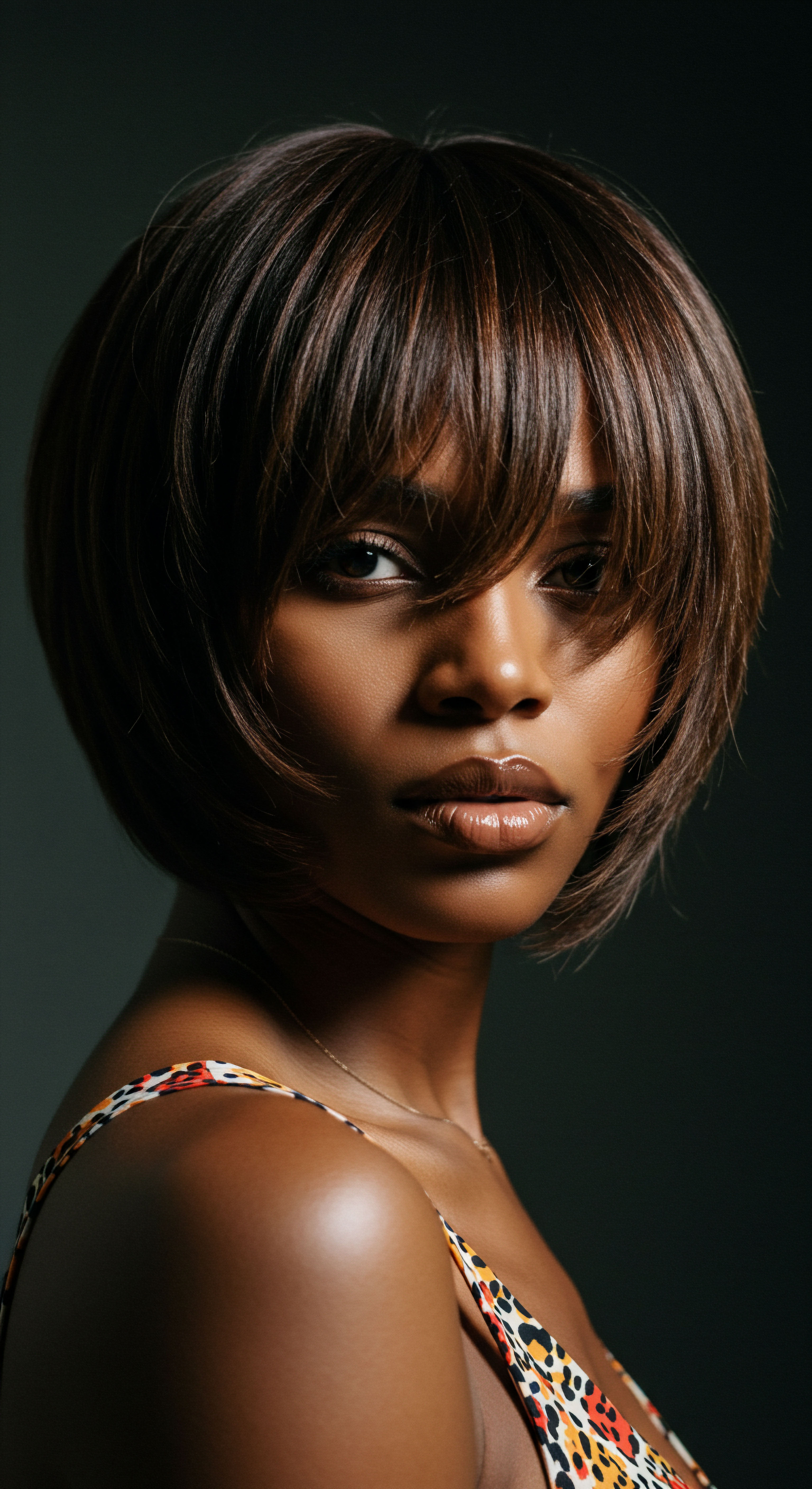
Reflection
As we close this exploration of cultural shifts and their profound influence on hair straightening, a quiet understanding settles. The journey of hair, particularly textured hair, mirrors the larger human experience of identity, belonging, and the enduring quest for self-acceptance amidst external pressures. Each coil, each strand, holds not only its unique biological blueprint but also the whispers of history, the echoes of societal expectations, and the resilience of those who have navigated these complex currents.
The choices we make about our hair are deeply personal, yet they are rarely made in a vacuum. They are shaped by the collective consciousness, by the images we see, and by the stories we inherit.
The path forward invites a conscious appreciation for the inherent beauty of all hair textures, a celebration of authenticity that transcends imposed standards. It calls for a deeper listening to our bodies, recognizing the signals our hair and scalp send, and prioritizing health over fleeting ideals. This understanding encourages a gentle hand, both in our physical care practices and in our societal conversations about what constitutes beauty. May this knowledge serve as a grounding presence, a reminder that true radiance springs from a place of self-knowing and genuine care, allowing every strand to flourish in its natural, vibrant truth.

References
- Abdullah, S. (1998). The Psychology of Hair in African American Women ❉ A Cultural and Historical Analysis.
- Banks, I. (2000). Hair Matters ❉ Beauty, Power, and the Politics of Hair in African American Women. New York University Press.
- Robinson, L. (2011). Hair Story ❉ Untangling the Roots of Black Hair in America. St. Martin’s Press.
- Thompson, L. (2009). Hair Power ❉ The Psychology of Black Women’s Hair. Routledge.
- Patton, T. O. (2010). Hey Girl, Am I More Than My Hair? African American Women and Their Struggles with Beauty, Power, and Identity. Peter Lang.
- White, M. (2005). Black Women and the Beauty Industry ❉ A Cultural History. University of Illinois Press.
- Bertrand, K. A. et al. (2023). Long-term use of chemical hair relaxers and risk of uterine cancer among Black women. Environmental Health Perspectives.
- Chang, C. J. et al. (2022). Use of straighteners and other hair products and incident uterine cancer. Journal of the National Cancer Institute.
- Eberle, C. A. et al. (2020). Hair dye and chemical straightener use and breast cancer risk in a large U.S. population of Black and White women. International Journal of Cancer.
- Llanos, A. A. M. et al. (2017). Hair product use and breast cancer risk in a multiethnic population. Carcinogenesis.
- Geczik, A. M. et al. (2023). Hair relaxer use and altered estrogen metabolism in postmenopausal women. Journal of Exposure Science & Environmental Epidemiology.
- Sishi, N. N. et al. (2021). An assessment of pH and chemical content of hair relaxers available in South Africa. South African Journal of Science.
- Bellinger, J. (2007). Black Hair ❉ A Cultural History. University of Chicago Press.
- Randle, L. (2015). Hair in African American Culture. Praeger.
- Wilkerson, K. (2017). The Natural Hair Movement ❉ A Revolutionary Act of Self-Love.